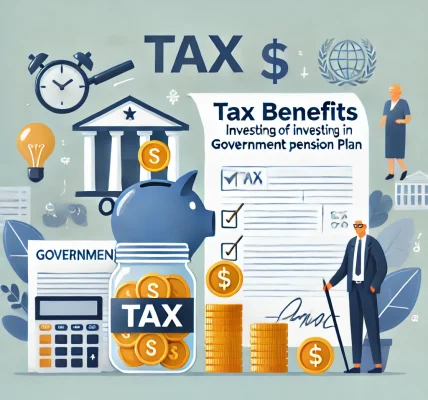Introduction
The unorganized sector plays a crucial role in the economy, employing millions of workers in industries such as agriculture, construction, small-scale manufacturing, domestic work, and more. However, due to the lack of a structured employment framework, these workers often face financial instability in their retirement years. To address this issue, various government pension schemes have been introduced to provide social security to unorganized sector workers.
In this comprehensive guide, we will explore different pension schemes available for unorganized sector workers, their benefits, eligibility criteria, and how one can enroll in them.
Why Pension Schemes Are Essential for Unorganized Sector Workers
Unlike salaried employees who receive provident fund benefits, most unorganized sector workers do not have access to any formal retirement savings. Here are some reasons why pension schemes are crucial for them:
- Financial Security: Provides a steady income post-retirement.
- Social Protection: Reduces dependency on family members in old age.
- Government Support: Many schemes offer contributions from the government, making it easier to save for retirement.
- Tax Benefits: Certain pension plans come with tax exemptions, providing additional savings.
Government Pension Schemes for Unorganized Sector Workers
1. Atal Pension Yojana (APY)
APY is a government-backed pension scheme designed specifically for workers in the unorganized sector.
Key Features:
- Provides a guaranteed monthly pension of ₹1,000 to ₹5,000 based on contributions.
- The government co-contributes for eligible subscribers.
- Contributions can be made monthly, quarterly, or half-yearly.
- The pension starts at the age of 60.
Eligibility:
- Must be an Indian citizen aged between 18-40 years.
- Should have a savings bank account.
- Must not be a beneficiary of any other social security scheme.
Pros & Cons:
✅ Government contribution for early subscribers. ✅ Guaranteed pension benefits. ❌ No premature withdrawals allowed except in emergencies.
2. National Pension System (NPS) – Swavalamban Scheme
NPS is a voluntary pension scheme that allows individuals to invest systematically in a retirement fund.
Key Features:
- Open to both organized and unorganized sector workers.
- Contributions are market-linked, leading to potential high returns.
- Offers tax benefits under Section 80C and 80CCD(1B).
- Allows withdrawal of 60% of the corpus at retirement, with the remaining 40% used for an annuity plan.
Eligibility:
- Any Indian citizen aged 18-65 years.
- Must have a valid KYC-compliant bank account.
Pros & Cons:
✅ Higher returns due to market-linked investments. ✅ Partial withdrawals allowed after 10 years. ❌ No guaranteed pension amount, as returns depend on market performance.
3. Pradhan Mantri Shram Yogi Maandhan (PM-SYM)
PM-SYM is a pension scheme for unorganized sector workers earning less than ₹15,000 per month.
Key Features:
- Provides a monthly pension of ₹3,000 after retirement.
- The government matches the worker’s monthly contribution.
- Contributions range from ₹55 to ₹200 per month, depending on age.
- If the subscriber dies, the spouse is entitled to 50% of the pension.
Eligibility:
- Must be aged between 18-40 years.
- Monthly income should be below ₹15,000.
- Must not be covered under EPF, NPS, or ESIC.
Pros & Cons:
✅ Affordable contributions with government co-contribution. ✅ Life-long pension post-retirement. ❌ No lump sum withdrawal; only monthly pensions are provided.
4. Indira Gandhi National Old Age Pension Scheme (IGNOAPS)
IGNOAPS is part of the National Social Assistance Programme (NSAP) that provides pensions to senior citizens, widows, and disabled individuals in the unorganized sector.
Key Features:
- Provides a monthly pension of ₹200 to ₹500, depending on the state.
- Available to individuals aged 60 years and above.
- Direct benefit transfer to the beneficiary’s bank account.
Eligibility:
- Must belong to a Below Poverty Line (BPL) family.
- Should be aged 60 years or above.
Pros & Cons:
✅ No contribution required from the beneficiary. ✅ Directly credited to the bank account. ❌ Pension amount is relatively low.
How to Enroll in a Pension Scheme for the Unorganized Sector?
Step-by-Step Enrollment Process:
- Choose the Right Pension Scheme:
- Compare benefits and contributions of different schemes.
- Select the one that suits your financial situation.
- Visit the Nearest Enrollment Center:
- Common Service Centers (CSCs) and post offices facilitate pension scheme enrollment.
- Complete the Registration Process:
- Fill out the required application form.
- Provide necessary documents like Aadhaar Card, bank details, and income proof.
- Start Making Contributions:
- Based on the selected scheme, start depositing contributions regularly.
- Track Your Pension Account:
- Monitor your contributions and pension fund growth.
- Use government portals or mobile apps for easy access.
Comparison of Pension Schemes for Unorganized Sector Workers
| Pension Scheme | Monthly Pension | Contribution Required | Government Support | Eligibility |
|---|---|---|---|---|
| Atal Pension Yojana (APY) | ₹1,000 – ₹5,000 | Yes | Yes | 18-40 years |
| NPS – Swavalamban | Market-linked | Yes | Partial | 18-65 years |
| PM-SYM | ₹3,000 | Yes | Yes | 18-40 years, income < ₹15,000 |
| IGNOAPS | ₹200 – ₹500 | No | Yes | 60+ years, BPL families |
Conclusion
For unorganized sector workers, pension schemes act as a financial cushion for their retirement years. With government-backed schemes like APY, NPS, and PM-SYM, workers can secure a stable income in their old age. By choosing the right scheme based on their financial needs and eligibility, they can ensure a worry-free retirement.
If you are an unorganized sector worker or know someone who is, encourage them to enroll in these pension schemes today to secure their financial future!




